Filter News
Area of Research
- (-) Neutron Science (40)
- Advanced Manufacturing (4)
- Biological Systems (2)
- Biology and Environment (56)
- Biology and Soft Matter (1)
- Building Technologies (4)
- Clean Energy (97)
- Climate and Environmental Systems (2)
- Computational Biology (2)
- Computer Science (1)
- Electricity and Smart Grid (1)
- Energy Frontier Research Centers (1)
- Fossil Energy (1)
- Fuel Cycle Science and Technology (1)
- Functional Materials for Energy (2)
- Fusion and Fission (15)
- Fusion Energy (1)
- Isotopes (3)
- Materials (95)
- Materials for Computing (6)
- National Security (27)
- Nuclear Science and Technology (14)
- Nuclear Systems Modeling, Simulation and Validation (1)
- Renewable Energy (1)
- Sensors and Controls (2)
- Supercomputing (62)
News Topics
- 3-D Printing/Advanced Manufacturing (1)
- Artificial Intelligence (2)
- Bioenergy (1)
- Biology (2)
- Biomedical (1)
- Composites (1)
- Computer Science (1)
- Cybersecurity (1)
- Decarbonization (1)
- Energy Storage (2)
- Environment (1)
- Frontier (1)
- Materials (3)
- Materials Science (2)
- Nanotechnology (1)
- National Security (1)
- Neutron Science (13)
- Physics (2)
- Quantum Science (1)
- Security (1)
- Space Exploration (1)
- Summit (1)
- Transportation (1)
Media Contacts

The Spallation Neutron Source at the Department of Energy’s Oak Ridge National Laboratory has reached a new milestone by operating a complete neutron production run cycle at 1.3 megawatts.
Achieving the record power level with a remarkable 94 percent accelerator bea...

The demand for lighter, stronger, and more durable materials for use in vehicles has never been higher. Companies are looking at new and advanced materials such as lightweight advanced high-strength steels (AHSS) to develop automotive components that help increase gas efficiency, red...
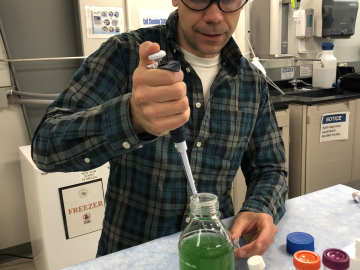
Scientists at Oak Ridge National Laboratory are using neutrons to understand why certain hydrocarbons produced by blue-green algae are important to their biology, so new strains can be engineered to sustainably produce biofuels. Neutron scattering makes it possible to non-destructively see inside living algae at real world temperatures and in real time.

Two Oak Ridge National Laboratory researchers specializing in neutron and chemical science are among 84 recipients of Department of Energy’s Office of Science Early Career Research Program awards.
The Early Career Research Program, now in its ninth year, supports...
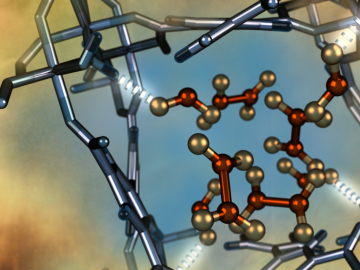
Led by the University of Manchester, an international team of scientists has developed a metal-organic framework material (MOF) that exhibits a selective, fully reversible and repeatable capability to remove nitrogen dioxide gas from the atmosphere in ambient conditions.

The Precision Reactor Oscillation and Spectrum Experiment (PROSPECT) has completed the installation of a novel antineutrino detector that will probe the possible existence of a new form of matter.
PROSPECT, located at the High Flux Isotope Reactor (HFIR) at the Department of Energy...
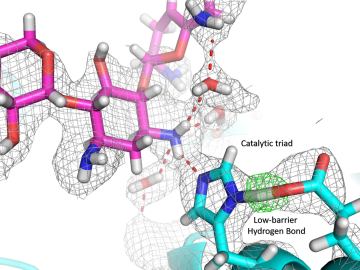
An Oak Ridge National Laboratory-led team has observed how a prolific class of antibiotics may be losing its effectiveness as certain bacteria develop drug resistance by acquiring enzymes known as aminoglycoside modifying enzymes. Aminoglycosides are commonly used in antibiotics to tre...
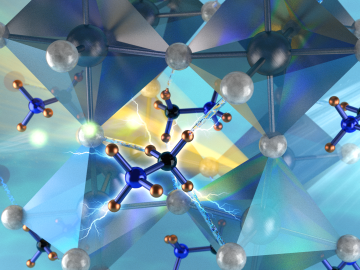
Neutron scattering has revealed, in real time, the fundamental mechanisms behind the conversion of sunlight into energy in hybrid perovskite materials. A better understanding of this behavior will enable manufacturers to design solar cells with increased efficiency...
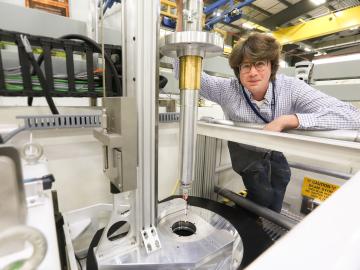
Plants, algae, and other organisms produce the RuBisCO enzyme to convert carbon dioxide from the atmosphere into energy-rich molecules, like glucose, that form carbohydrates and other organic carbon compounds essential to life on earth.
This catalytic process is called “carbon f...

A team led by researchers at the Department of Energy’s Oak Ridge National Laboratory has developed a safer cladding for nuclear fuel rods.
The new material, an alloy of iron, chromium and aluminum, avoids zirconium. As a result, it should give plant operators s...




